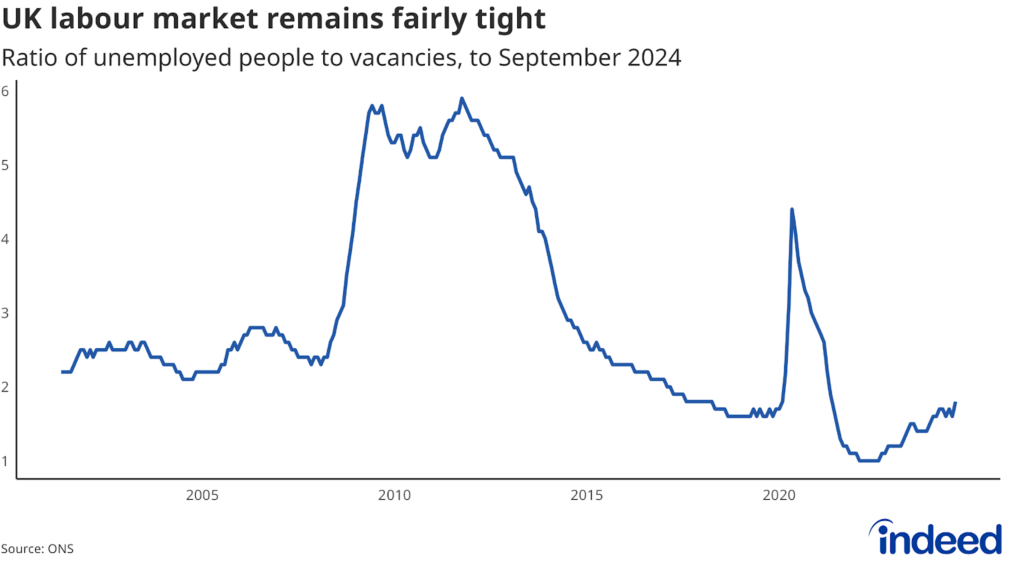Hotter-than-expected wage growth underlines the quandary facing Bank of England rate-setters. Though the labour market has cooled significantly and heads into 2025 in a fragile state, it continues to generate sticky and elevated wage growth, which, at 5.2% year-on-year, remains above levels consistent with the Bank’s inflation target. Key for the outlook is whether that trend continues, alongside strong services inflation, limiting the Bank to only gradual interest rate cuts, or if the labour market materially weakens further, which could prompt more aggressive rate cuts. The challenge is compounded by data quality issues, which continue to muddy the waters on underlying dynamics, particularly on the labour supply side.
Indeed data shows job postings have continued to slide into early December, sitting 13% below their 1 February 2020 pre-pandemic baseline, as of 6 December 2024. It’s an increasingly broad-based slowing, with almost all job categories having weakened over the past year, including low-paid occupations, such as retail and hospitality, which are widely expected to be hard-hit by the employer NICs increase. That’s in contrast to other European countries where job postings in these sectors remain generally elevated.



